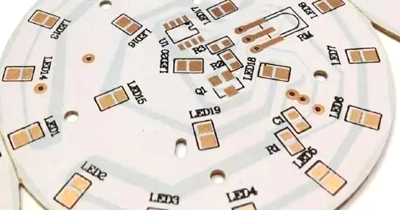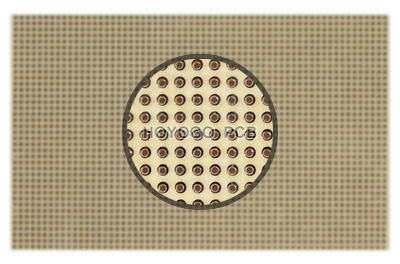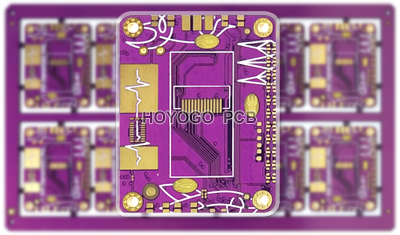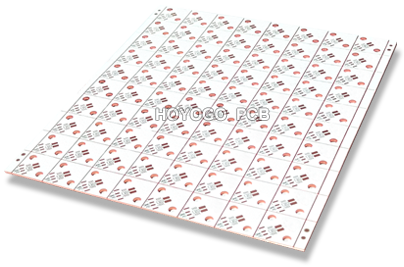A high performance organic rigid PCB substrate, usually composed of dielectric layer(epoxy resin, fiberglass) and high purify conductor(copper foil). The relevant parameters for evaluating the quality of the PCB substrate include glass transition temperature Tg, thermal expansion coefficient CTE, thermal decomposition time and decomposition temperature Td of the substrate, electrical properties, water absorption of PCB, and electromigration CAF, etc.
Generally, the substrate materials for PCB can be divided into two types: rigid substrate materials and flexible substrate materials. Copper clad laminates are important rigid base materials.
According to PCB board reinforcement materials are generally divided into the following categories:
1. Phenolic PCB paper substrate
Since this kind of PCB is composed of pulp wood pulp and the like, it is sometimes called cardboard, V0 board, flame retardant board and 94HB, etc. Its main material is wood pulp fiber paper, a PCB board which is pressed and synthesized by phenolic resin. This substrate is not fireproof, but can be punched; it is low cost and relatively low in density.

2. Composite PCB substrate
It mainly refers to CEM-1 and CEM-3 composite copper clad laminates, and is currently the most common composite copper clad laminates. These type of base materials are cheaper than the FR4 types. Cem-1 base materials are also called 22F in some parts of the China.

3. Glass fiber PCB substrate
It is also called epoxy board, fiberglass board, FR4 board, fiberboard, etc. Glass fiber PCB substrate uses epoxy resin as a binder and a fiberglass cloth as a reinforcing material.
Features: It has a high operating temperature and is less affected by the environment. This type of base material is often used on double-sided PCBs.

4. Other substrate
In addition to the three substrates commonly found above, there are also metal substrates and laminate multi-layer boards (BUM).

All in all, each substrate has its own characteristics. And to a large extent, the performance, quality, manufacturing cost, manufacturing level, etc. of the PCB depend on the substrate material.
The global PCB substrate material technology and production has been developed for more than half a century. It is estimated that by 2020, the global PCB output value will reach approximately 68.81 billion USD. This development will be driven by innovations and developments in electronic machine products, semiconductor manufacturing technology, electronic mounting technology and printed circuit board technology.